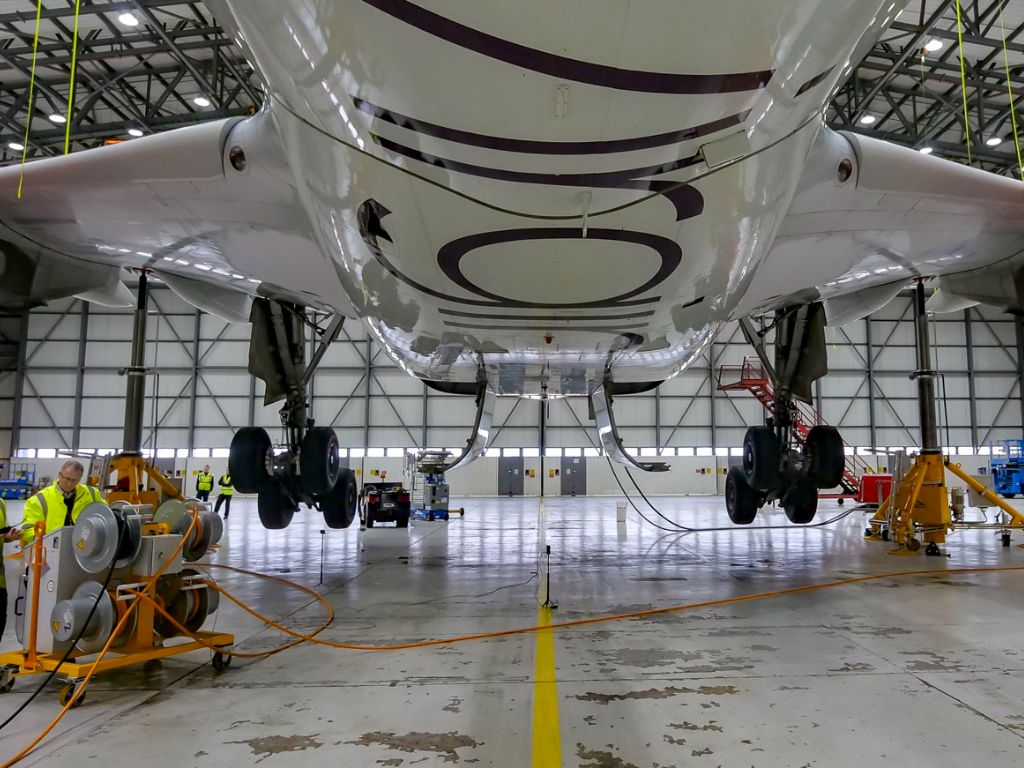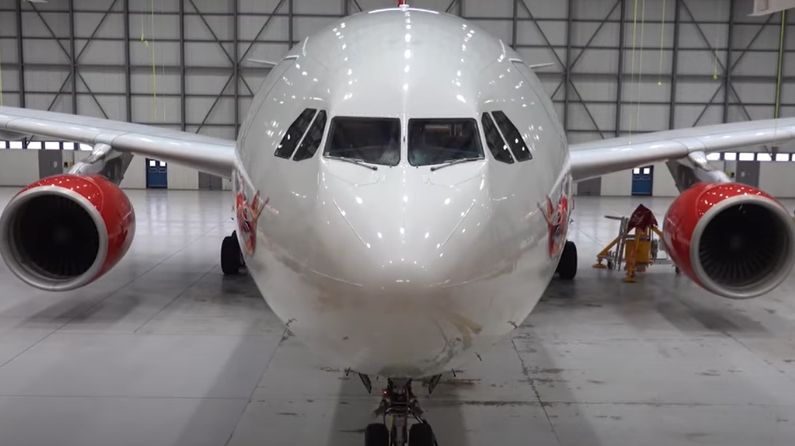A lot is going on when the undercarriage on your aircraft retracts or extends. The pilot moves a small lever on the flight deck which sets off a computer-controlled sequence of events that operates the giant doors and moves over 7 tonnes of landing gear into place.

Our video shows the engineers testing the fascinating movement of the gear close up, complete with a very satisfying clunk as the big doors swing shut. Here’s what we observed:
- Landing gear is inspected and maintained, but there are occasions when the aircraft has to be taken into the hanger for more in-depth work. This is called a ‘gear swing’.
- In charge of this gear swing is lead certifying engineer Luke Chiles who starts the day with a briefing for his team. Once the aircraft has been positioned in the hangar, he gets to work on the day’s huge checklist.
- The engineers spend about half an hour preparing the computers ahead of a wheel lift. On a normal day, the aircraft’s computers would be alarmed if the wheels had left the ground, but the engines weren’t running!
- First objective is making sure the aircraft is light enough to lift. Luke checks how much fuel is onboard the aircraft and how it’s distributed among the tanks. Too much would put the aircraft over the weight limit.

- Plates are bolted onto to the jacking points (on the Airbus A330 it is jacked on the wings and nose). Then the team manoeuvre the giant jacks into place.
- Long gone are the days when the hangar team used to jack the aircraft by hand (teams of four taking turns to do 60 cranks per person) with shouts of ‘up a bit, down a bit’ echoing from engineers stationed at each wheelset. Back then the engineers used to pop an oil tin under the wheels to make sure they were high enough off the ground. Lifting an aircraft these days is a high-tech event run from a central control panel. A digital spirit level is attached to the underside of the aircraft, and the jacks are positioned using lasers. The self-levelling jacks then begin the process of lifting the aircraft high enough off the ground to enable the wheels to retract. Despite all this technology, if you look carefully at the video, you can still see aircraft maintenance manager Phil Johnson quickly doing the oil can test. Old habits eh PJ?

- The landing gear on the Airbus A330 consists of two, four-wheel, twin axle bogies with oleo-pneumatic shock absorbers. The nose gear has two wheels and retracts forwards.
- The whole process of retracting and extending the landing gear is controlled by a computer called LGCIUs (Landing Gear Control and Interface Units). There are two separate identical units, one being a backup. They monitor the position of the landing gear and communicate with other aircraft systems. Every time the gear is cycled, it switches between the two computers. This maintains reliability by not having the backup system sitting dormant. On the flight deck, the pilots have landing gear lights which illuminate red when the wheels aren’t locked, or are in transit, green when they are down and locked, and off when the wheels are up and locked with the lever selected to up.
- There’s also a page on the aircraft’s ECAM (electronic centralised aircraft monitor) panel which gives pilots the wheel position as well as other information such as tyre pressures and brake temperatures.
- There’s a back-up in the unlikely event that both hydraulic systems fail. The wheels can be lowered just using gravity! Testing this free drop is one of the aims of the gear swing. This is activated by a separate switch on the flight deck and operated by electromagnets.
- As they stand, the main landing gear legs are too long to fit into the bay. They have a clever shortening mechanism fitted to each main leg that reduces the length of the gear by retracting the shock absorber as the wheels retract. You can see this happening in the video. The shiny shock absorber section gets shorter as the wheels go up.
- Above 280 knots the hydraulic supply is automatically cut off so the gear can’t be lowered when the aircraft is flying too fast. If the pilot puts the gear down above 280 knots, nothing will happen until the speed decreases.



